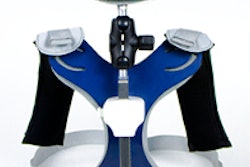
The complexities of orofacial pain, combined with a lack of adequate pain education in most dental schools, makes diagnosing and treating conditions such as temporomandibular disorder (TMD) and burning mouth a challenge, according to some pain experts.
And the situation isn't likely to change any time soon unless dental schools begin putting more emphasis on understanding the mechanisms of, and treatment options for, chronic pain conditions, according to Barry Sessle, M.D.S., Ph.D., D.Sc., professor of dentistry at the University of Toronto and president of the Canadian Pain Society.
“Pain is so different for a healthcare practitioner to deal with, compared to a cavity in the tooth.”
— Barry Sessle, M.D.S., Ph.D., D.Sc.,
president of the Canadian
Pain Society
"Most chronic pains represent a diagnostic or management challenge to dentists for several reasons, including the inadequate education most dentists receive regarding pain," he wrote in the May 2009 issue of the Journal of the Canadian Dental Association (Vol. 75:4, pp. 275-277). "Unless there is increased educational focus on pain mechanisms, diagnosis, and management, including emphasis on the need for interdisciplinary/interprofessional management of many chronic pain conditions, many patients will continue to be poorly served."
At most dental schools in the U.S. and Canada, chronic pain comprises a minor component of the curriculum, he added, with no structured courses or clinical rotations specifically addressing orofacial pain. "Little wonder then that there is such a lack of understanding, inappropriate management, and controversy on how to diagnose and manage many chronic orofacial pain conditions," he wrote.
"I think Dr. Sessle is making a very important point here," said Jeffrey Okeson, D.M.D., professor and chair of the department of oral health science and director of the Orofacial Pain Center at the University of Kentucky College of Dentistry. "There is a whole group of patients out there that have a variety of pain complications, and we aren't handling them as well as we should."
Dr. Okeson has spent most of his 35-year career educating students, residents, and clinicians about TMD and orofacial pain, and has authored several books on these subjects. He also pioneered the orofacial pain program at the University of Kentucky, one of only a handful of such programs in the U.S.
"What dental schools need to teach is the muscle and joint pain associated with jaw function," Dr. Okeson said. "There are graduates today who leave dental programs not knowing anything about this."
Educational guidelines and programs that emphasize such approaches do exist and can be used in the development of a pain focus in dental school curricula, Dr. Sessle noted, and he is actively urging dental schools and accrediting organizations to change their competency and educational requirements to incorporate them.
"When I was dean of the University of Toronto dental school, about 10 years ago, the university decided to enhance activities in interprofessional/interdisciplinary education, and we saw pain as a way to do this, as the vehicle for collaborating between the different health sciences," he said. "We now have Pain Week every year, where all the health science students come together to learn about pain and its mechanisms. So there are prototypes for these interdisciplinary programs, and guidelines have been produced and published as well. But schools need to have the willingness and find the time in the curriculum for this."
New education criteria
Changes are afoot that might make this more likely to happen in the near future. The American Academy of Orofacial Pain has been lobbying the ADA since 1985 to recognize orofacial pain as a specialty and has submitted formal requests to the Commission on Dental Accreditation (CODA) for accreditation of advanced education programs in orofacial pain.
"In U.S. dental schools, pain mechanisms and chronic pain receive very little programmatic time," noted Steven Ganzberg, D.M.D., M.S., professor of anesthesiology at Ohio State University College of Dentistry. "Even temporomandibular disorders, a small subset of orofacial pains, receive only cursory attention in some dental schools. Part of the problem is the lack of qualified clinician-educators who can provide this information to dental students. Efforts to make Orofacial Pain Management an ADA recognized specialty have failed, contributing to this instructor shortage."
While CODA will soon start accrediting orofacial pain residencies -- a good first step, Dr. Ganzberg added -- "unless dentistry as a profession really wants to start recognizing non-surgical specialty areas like orofacial pain, the impetus to provide education at a high level of instruction will be some time in coming."
The American Dental Education Association (ADEA), CODA, and the national board licensing groups are now collaborating to develop accreditation standards for TMD and orofacial pain, according to Ron Attanasio, D.D.S., M.S.Ed., professor and director of the TMD and Orofacial Pain Clinic at the University of Nebraska. Like Dr. Sessle and Dr. Okeson, Dr. Attanasio has spent the last several years actively lobbying to get TMD/orofacial pain recognized by the dental accreditation and licensing groups.
"All these groups are starting to work together to promote what should be taught in dental schools and to provide some common guidelines," he said. "The ADEA's Commission on Change and Innovation last year developed and approved a document that outlines competencies for new general dentists, and in there is a standard that says the dentist will be competent in the diagnosis and management of TMD. And this is the first time this has happened."
Last June CODA developed criteria for graduate training programs for orofacial pain that could be approved as a formal accreditation standard this year, he added. And once dental schools start including orofacial pain management in their curricula, the licensure board will be more likely to begin testing on it as well. Ultimately, Dr. Attanasio and others believe, this could lead to the recognition of orofacial pain as a dental specialty.
"This is the first step in creating a standard for education in orofacial pain," Dr. Okeson said. "I hope to one day see this even as a specialty. We ought to be able to send someone to an orofacial pain specialist if you can't figure out a pain problem in a patient. That's been my dream for 20 years."
In the meantime, Dr. Sessle and Dr. Okeson recommend that practicing dentists take university-accredited continuing education courses that deal with the subject of orofacial pain to better understand both the underlying mechanisms of pain and the various treatment options for chronic pain conditions.
"Pain is so different for a healthcare practitioner to deal with, compared to a cavity in the tooth," Dr. Sessle said. "As dentists, we are well-trained in what to do when we see a cavity in the tooth. But pain is such a subjective, emotional, multidimensional experience that it requires a lot of knowledge of human behavior and the emotional complexities that go along with it. It is no longer just a biological problem."
Copyright © 2009 DrBicuspid.com



















